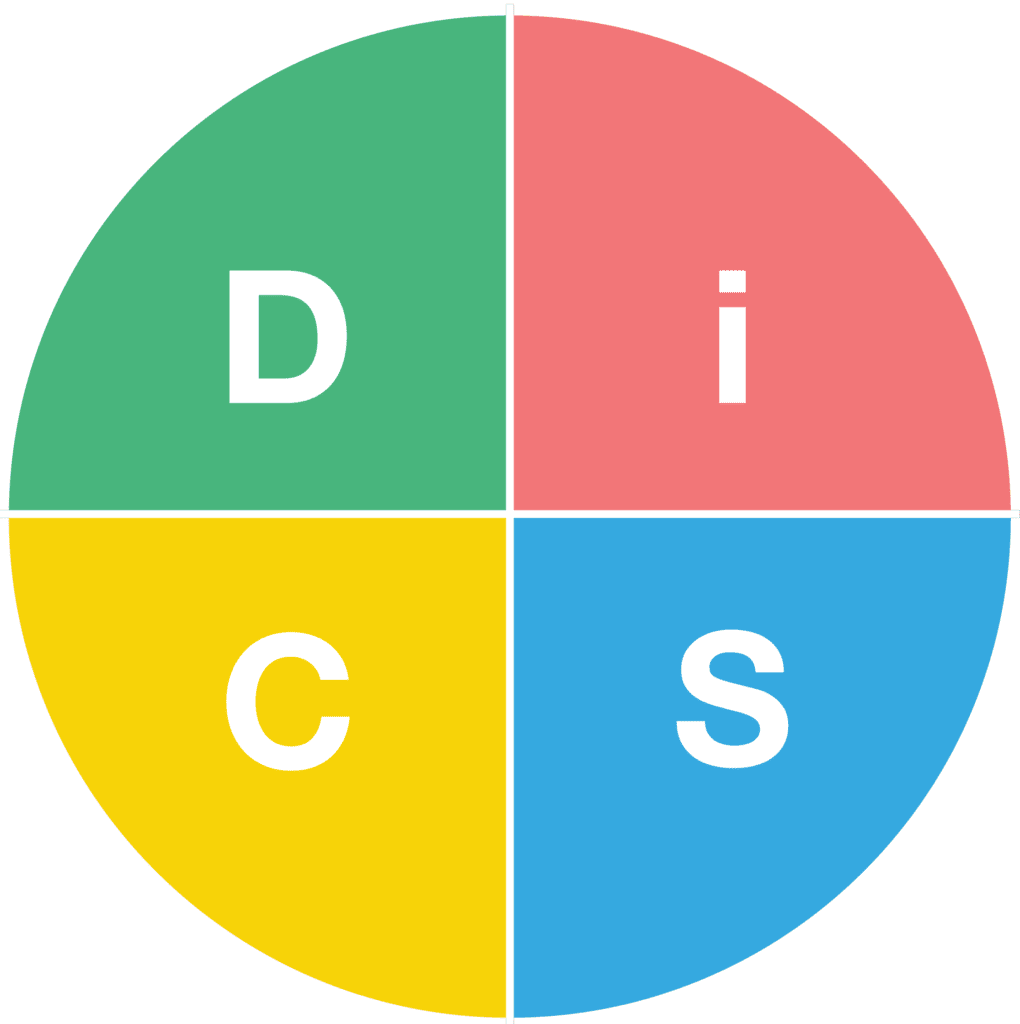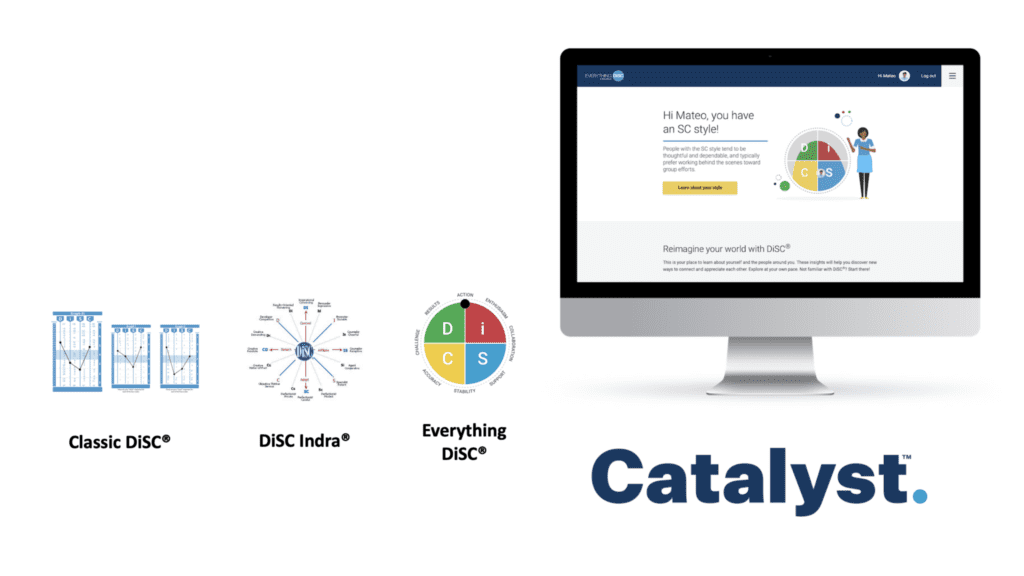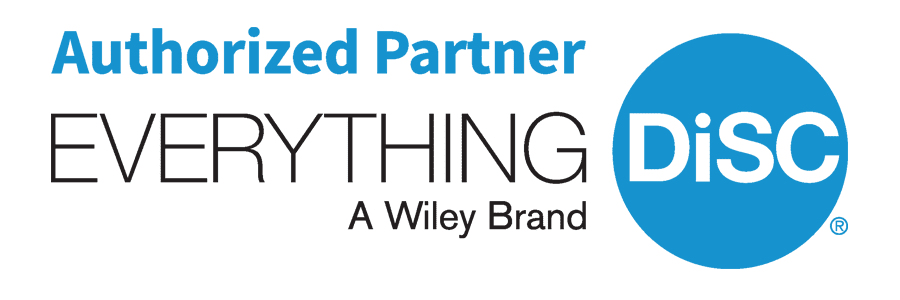DiSC Frequently Asked Questions (FAQ)
Get fast answers about DiSC with our DiSC FAQ

DiSC Profile FAQ
Below are questions that are frequently asked about DiSC reports and why someone received a certain profile. All answers are related to the DiSC tools that are published by John Wiley & Sons.
In general, a person’s profile tends to stay fairly consistent over time. While you may find small differences in your results from one time taking the assessment to the next, you’re unlikely to experience major shifts in style.
Everything DISC has been researched for both validity and reliability. If it has been two years or more since you last took the profile, we recommend taking it again to ensure the most accurate and up-to-date information.
The lowercase “i” in DiSC® is a Wiley trademark and allows you to determine if you are using a DiSC Product that is published by Wiley.
Legend has it that it was originally a printing error, although some in the know have said it was done on purpose very early on to put a particular “i” style person in their place. Either way, Performax (later Carlson Learning Company, Inscape Publishing, and now Wiley) decided to copyright and brand their version of DiSC using the small “i” distinguishing it from other DiSC based assessments.
The DISC model was originally based on the 1928 work of Dr. William Moulton Marston at Columbia University.
The four-quadrant behavioral model was developed to examine the behavior of individuals within their environmentally specific situations. DiSC looks at behavioral styles and behavioral preferences. It was Marston’s 1928 book, The Emotions of Normal People, which introduced the DISC model to the public. Marston, a contemporary of Carl Jung, defined four categories of human behavior style, type, or temperament which are Dominance, Influence (Inducement), Stability (Submission) and Compliant, Conscientious or Caution. Marston used compliance.
Even though Marston developed the D.I.S.C. model to prove his theory of the emotions of people within their environment, he never copyrighted his test. Thus DiSC is available in the public domain.
Later, the work of Marston was researched and updated by Dr. John Geier and Inscape Publishing at the University of Minnesota. The DISC model and its complementary assessment tools have helped over 50 million people in 20+ languages over the last 40 years.
As an added bit of trivia, Marston is known in many circles for his work in developing the lie detector test. He was also the creator, writer, and producer of “Wonder Woman” which was introduced into comic strips, the role model of a strong female.
The Everything DISC model has shown that the four primary styles break out to each represent around a quarter of the population. Below is an excerpt from that research which shows the exact distribution by all 12 styles:

The distance that a respondent’s dot is located from the center of the circle is known as an inclination (in the past we used the term “High D” or “High i” to communicate the strength of a person’s inclination).
People with stronger inclinations are expected to have more pronounced DiSC styles. The publisher of DiSC conducted an analysis and found that Caucasians were significantly more likely to have stronger inclinations than other groups. However, the effect sizes suggest that the relationship between race and inclination showed little practical importance.
In the same study, researchers compared men and women and found that the difference in their inclination (Style Strength) was less than 1% variance.
For those interested in learning more about the research of DiSC, we strongly suggest purchasing and reading the DiSC Manual.

DiSC (with the small 'i') began back in the 1970s with a paper instrument called the Personal Profile System. Today, there are four unique DiSC product categories:
DiSC 2800 Series Paper Profile: When using the DiSC Paper Profile, learners receive a paper booklet and answer 28 questions on how they would describe themself using a scratch-off questioning system. Once the learner has answered every question, they tally up the number of unique systems and plot their graph. They plot three graphs: 1) Words that most describe me 2) Words that least describe me 3) Combination score. The third graph (combination score) is the graph that provides a learner with their DiSC Style.
DiSC Classic 2.0 Online Assessment: The DiSC Classic 2.0 assessment uses an online 28-forced choice assessment. Once users complete this test, they will receive both their DiSC Classic style and their classical pattern. While the methodology is the same as the paper profile, the online version offers the ability for users to create group reports to analyze team culture based on DiSC. The assessment was updated in 1994 and uses more precise language to capture a person's style more accurately.
Everything DiSC: Everything DiSC is very different from the Paper Profile and DiSC Classic 2.0. While this tool still uses the same DiSC theory, it moves away from the line graph and instead uses a circular model to identify someone's DiSC Style. Additionally, Everything DiSC moves away from forced-choice testing and instead uses computerized adaptive testing. Everything DiSC was found to be 32% more accurate than the DiSC Classic and Paper Profile Systems.
Catalyst: Catalyst is a learning platform that is built specifically for Everything DiSC. This tool combines four-assessment products: Workplace, Management, Agile EQ, and Productive Conflict into one assessment experience. This tool differs from Everything DiSC because it allows for more insights in a single learner experience by moving away from a PDF report and using interactive elements like video, audio, graphics, and comparative tools.
No!
DiSC is a simple model and very easy to understand and use from a facilitation perspective. There are facilitation kits available for each DiSC application.
DiSC Certification is available for anyone that wants to increase their knowledge of using DiSC.
Over 1-million people complete an Everything DiSC profile each year. For over 40-years, this tool has gone through extensive research. This tool is owned and published by John Wiley & Sons which has been a staple in academic research and publishing for over 200 years.
For those that are interested in the full research of Everything DiSC, we suggest purchasing the Everything DiSC Manual which outlines all available research on this tool.
For the most important and basic details of Everything DiSC's reliability and validity, feel free to download this research report.




